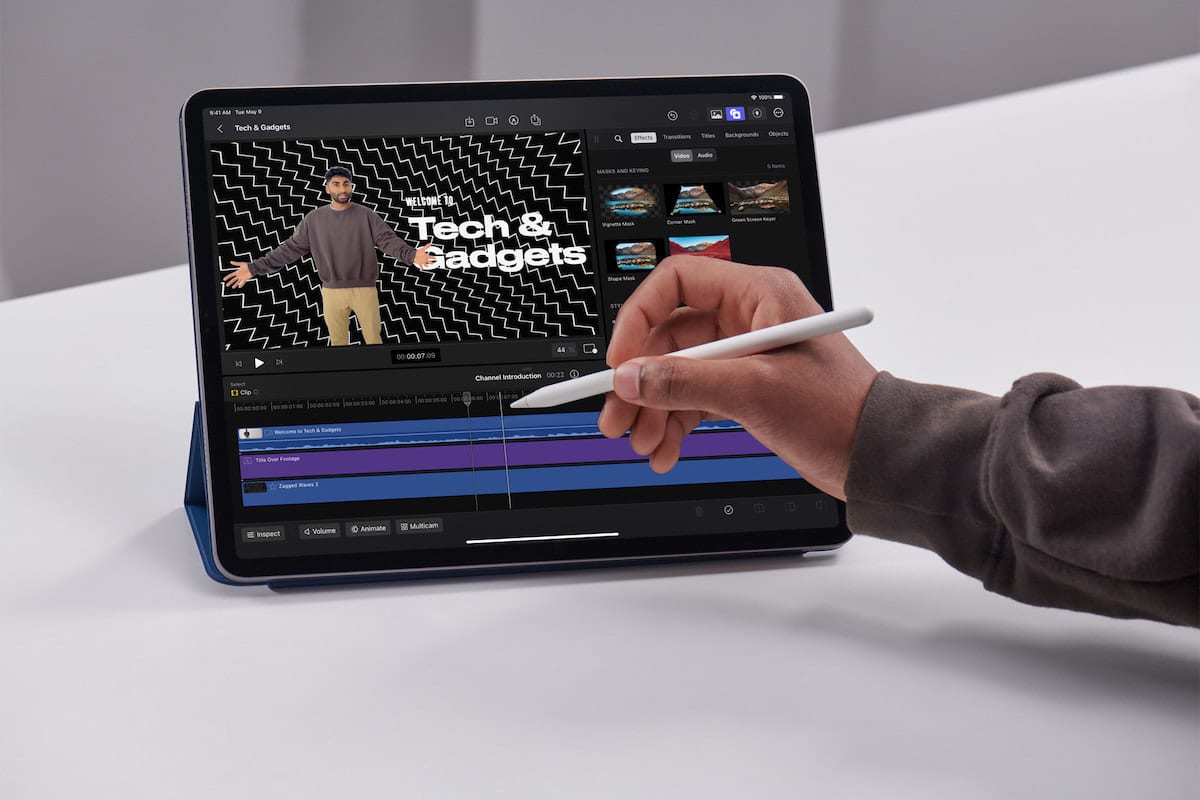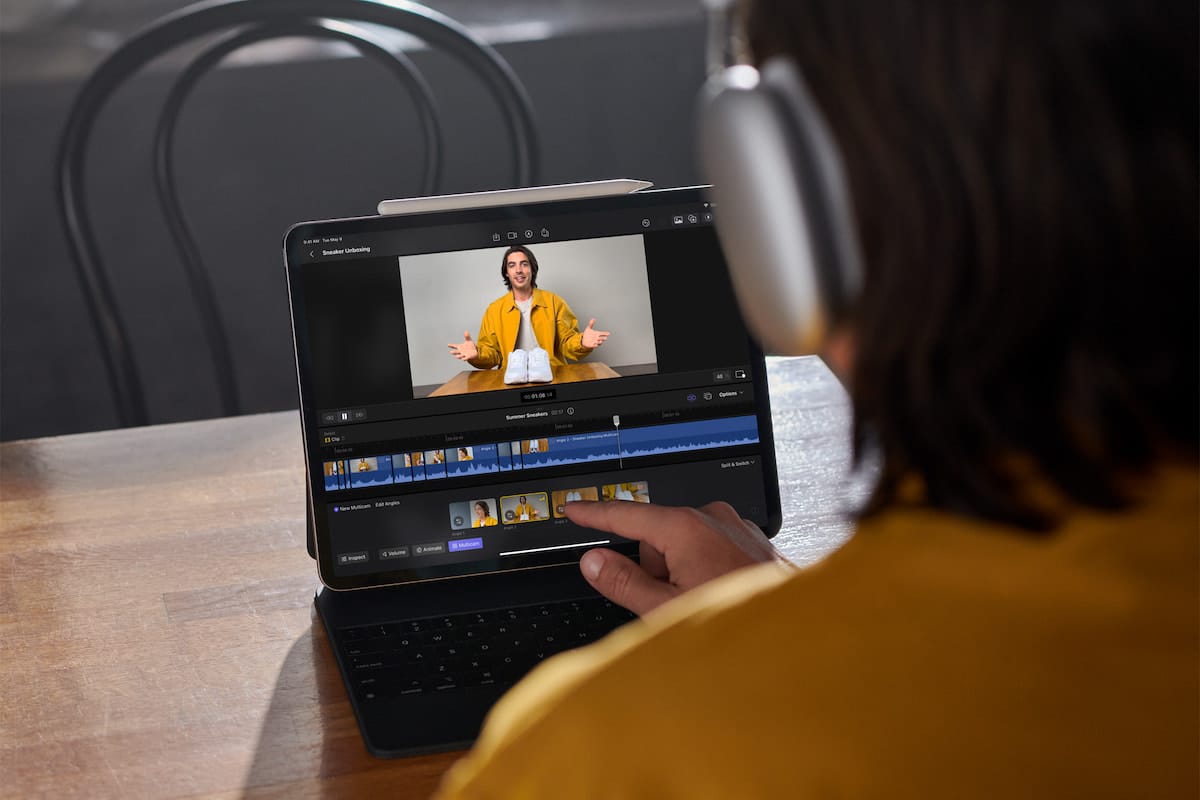Apple finally released the new subscription on iPadOS on May 23 after announcing Final Cut Pro for iPad on May 9 along with Logic Pro for iPad.
Now, Final Cut Pro for iPad reviews are out which praise the all-new touch interfaces but are disappointed with the lack of support for all features available on its macOS version.

First Impressions of Final Cut Pro for iPad
Final Cut Pro is Apple’s native professional video editing service for macOS which offers powerful tools to personalize videos like motion graphics, Object Tracker to detect faces and objects with Cinematic mode, support for Apple Silicon for more complex edits, organizing tools, and much more. After years of waiting, the service is now available on iPadOS.
Final Cut Pro for iPad is compatible with M1 chip iPad models or later, requires iPadOS 16.4, and comes with support for Apple Pencil and external keyboards. It is available for $4.99 per month or $49 per year with a one-month free trial.

CNET said that Final Cut Pro for iPad feels “more flexible” with touch interfaces, keyboard/trackpad, and Apple Pencil support, but it does not offer full features as on macOS.
Final Cut Pro isn’t as full-featured as the Mac version, and it’s also designed, weirdly, to funnel its output up to the Mac app but not the other way around. In that sense, it feels like an intermediary step for any pro video editor… something you’d use in the field, maybe, beginning video editing work before perhaps finishing off on a Mac.
However, I see a lot of advantages bubbling up here in Final Cut Pro on iPadOS. The scrub tool is clever (although trackpads on Macs could do something similar). Some support for instant Pencil animations opens up possibilities for ways to blend graphic art and video editing, although the doorway in Final Cut Pro feels more slightly opened than truly maximized.
Gizmodo wrote that Final Cut Pro for iPad is a good introduction for “young videographers” to create fun, not too complex, projects but at the moment not a tool for professionals.
As a former student of a journalism school that had us using Snapseed to cut together Instagram Stories on our phones so that we would be ready for “the future,” I’m glad to see more desktop level suites making their way to folks who might need to edit on the fly.
You won’t see the next Avengers being made on an iPad, but for young videographers putting together quick man-on-the-street style documentaries, or even for folks who want to treat their project more like a low stress, fun hobby than a “sit down at your desk” activity, Final Cut Pro for iPad fills a niche that’s been left woefully absent until now.

Forbes said that the new touch interface in Final Cut Pro for iPad is “crucial” to offer an intimacy that the Macs’ finger-on-touchpad does not. It is a fast and responsive app with a smooth and seamless.
Not only does this new software make working on the go fast and versatile (with a keyboard, without a keyboard, with a Pencil or just your finger), it is so accessible and welcoming that it will likely bring a vast number of people to the app who have never considered using it before.
The Verge’s verdict is that Final Cut Pro for iPad is a nice app with a touch-friendly design and adorable price but comes with limited capabilities.
Final Cut Pro for iPad is a carefully designed app that gets a lot of the basics right. It’s a great adaptation of its desktop app, and FCP users will feel right at home. It also takes advantage of the iPad’s touch-first interface and utilizes accessories.
Overall, there are a lot of things I liked about editing with Final Cut Pro on the iPad. But I’m surprised at how many of the features are missing — the coloring options are lacking, some very common features like the blade tool or ability to enable and disable clips are gone, you can’t import LUTs, the stabilization is missing… I could go on.

After testing the new app, the reviewer at Six Colors was left with “mixed feelings”. He concluded that the touch interface was enjoyable but the lack of all features available on the macOS version is disappointing.
After quite a few hours in Final Cut Pro iPad, my impressions are mixed. There were moments where I really did get into a groove and felt great about the app—generally when I was using the Magic Keyboard since it gave me access to shortcuts that haven’t been properly translated into the touch interface.
But I also felt a lot of familiar frustration at an app that’s packed with features but hasn’t quite realized that multi-touch gestures and the Apple Pencil can make the process go smoother even without an attached keyboard. The pieces are all in place for Final Cut Pro to become a great iPad app, but it’s still got a lot of growing up to do.
Read More: